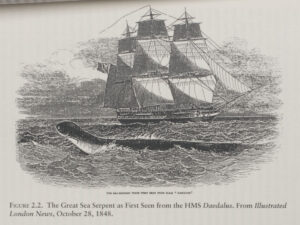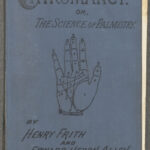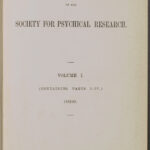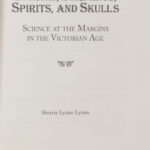Victorians filled auditoriums to hear presentations by the leading scientific lights of their day. Michael Faraday’s lectures on electricity and magnetism, for example, were wildly popular and people jammed every hall in which he appeared.
But for all their interest in the sciences, Victorians could have trouble distinguishing between legitimate lines of scientific inquiry and what author Sherrie Lynne Lyons calls “marginal science.” The latter isn’t limited only to deliberate charlatanism and quackery, though.
Theories that we now perceive as pseudoscience, or even just plain nonsense, might at one time have been perceived as entirely rational scientific questions, well worth investigating.  Sometimes very serious people with very serious intentions pursue paths that seem silly in hindsight but which, in the immortal phrase, “seemed like a good idea at the time.”
Sometimes very serious people with very serious intentions pursue paths that seem silly in hindsight but which, in the immortal phrase, “seemed like a good idea at the time.”
Charles Lyell – distinguished geologist, member of the Royal Society, sane person, and good friend of Charles Darwin – admitted that he “believed in the sea serpent without ever having seen it.” William Crookes, a productive, respected, and accomplished 19th century chemist and physicist, developed a serious interest in spiritualism. They were not alone, Lyons tells us, and their pursuits did not make them quacks.
 Consider: the MIT Libraries’ Vail Collection was assembled during the Victorian era. It’s one of the world’s most important collections of books on electricity, electrical engineering, magnetism, and allied sciences … and it also contains material on “animal magnetism.” Because no one could account for the vital force that animated living beings, theories proliferated. Among them was the idea that a magnetic “fluid” of some sort lay within, and could be transferred between, sentient creatures. Serious investigations into “animal magnetism,” of course, could easily diverge into questions about spiritualism, mesmerism, psychic phenomena, and so on.
Consider: the MIT Libraries’ Vail Collection was assembled during the Victorian era. It’s one of the world’s most important collections of books on electricity, electrical engineering, magnetism, and allied sciences … and it also contains material on “animal magnetism.” Because no one could account for the vital force that animated living beings, theories proliferated. Among them was the idea that a magnetic “fluid” of some sort lay within, and could be transferred between, sentient creatures. Serious investigations into “animal magnetism,” of course, could easily diverge into questions about spiritualism, mesmerism, psychic phenomena, and so on.
Thus the Vail Collection contains 17th century books on  witchcraft; the complete multi-year run of a serious 19th century journal produced by the Society for Psychical Research; and even books on palm reading.
witchcraft; the complete multi-year run of a serious 19th century journal produced by the Society for Psychical Research; and even books on palm reading.
Today we congratulate ourselves for dismissing such seemingly  ridiculous concepts as phrenology and palmistry, and for denying the existence of sea serpents. But one of the most difficult aspects of the scientific enterprise is the question asked at the outset: which phenomena actually merit serious scientific investigation? It’s only with the luxury of hindsight that such questions seem easy to answer.
ridiculous concepts as phrenology and palmistry, and for denying the existence of sea serpents. But one of the most difficult aspects of the scientific enterprise is the question asked at the outset: which phenomena actually merit serious scientific investigation? It’s only with the luxury of hindsight that such questions seem easy to answer.

